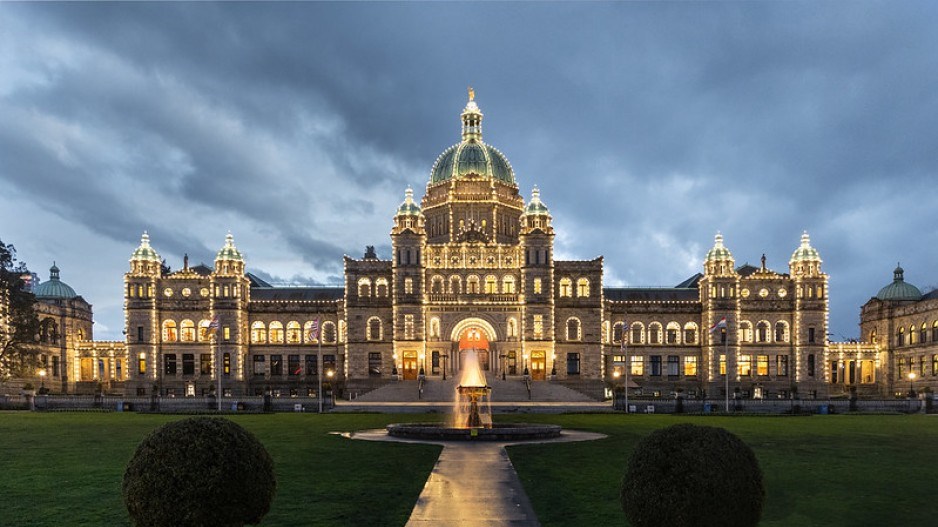In just a few years, British Columbia has gone from being one of the most fiscally sound provinces, with a low debt load and a stellar credit rating, to being in perhaps the weakest financial position of all major Canadian jurisdictions. Having dug itself into a very deep fiscal hole under the leadership of Premier David Eby, and with the economy already on shaky ground before the trade turmoil that erupted in early 2025, B.C.’s financial outlook is not only dismal — it looks poised to worsen.
Like other provinces, B.C. took a fiscal hit during the pandemic. But it emerged in solid financial shape and even posted two consecutive surpluses after 2020-21, buoyed by windfall revenues from the re-opening of the economy and record-high commodity prices.
This enviable fiscal position began to unravel in 2023-24. Spending and borrowing soared as revenue growth abated. The result was a $5 billion operating deficit, incurred at a time when the economy was still enjoying decent growth. The next year, government operating and capital spending became completely untethered from economic reality, with the deficit surging to a record $9.1 billion in 2024–25 and the province further ramping up its ambitious capital spending program, causing overall taxpayer-supported debt to rise vertiginously.
The 2025 budget offered no respite, confirming the re-elected government intended to shun fiscal discipline and stick with an economic plan underpinned by an ever-expanding public sector. Instead of charting a path to lower the operating deficit, government pencilled in an even larger shortfall of $10.9 billion in 2025-26, with similar torrents of red ink projected for the two subsequent years.
Budget 2025 also called for total capital spending of roughly $15 billion annually over three years. While much of this reflects needed infrastructure investment, some of the record borrowing is due to projects being carried forward because of missed construction timelines and cost escalation. The government’s ideological commitment to union-only community benefit agreements has piled on yet more unnecessary costs.
Under the updated plan set out in the budget, B.C. is on track to run five consecutive operating deficits. Even before Donald Trump, these were expected to add at least $45 billion to the net debt. Over the same period, capital investments add another $60 billion or so. This year, total taxpayer-supported debt has already doubled compared to where it stood under former premier John Horgan. The plan outlined in Budget 2025 will see B.C.’s debt reach $166 billion, which will be a staggering $105 billion increase since Eby became leader. Stated plainly, the Eby government has taken a wrecking ball to British Columbia’s public finances.
International credit rating agencies have taken note. B.C. has seen multiple downgrades, and we are convinced more will follow in 2026-27. More revenues must now be allocated to servicing the debt — debt-servicing costs today rank as the third-largest line item in the budget after health and education.
And all of this is before we account for the potential negative effects of the Trump-initiated tariff war. The latest budget assumed 1.8 per cent economic growth in 2025, with no adjustment for tariffs. But supplementary economic modelling done by the government estimates that broadly applied 25-per-cent U.S. tariffs along with similar Canadian retaliation could push B.C.’s economic growth rate close to zero this year, with only a slight pick-up in 2026. Absent a policy response, that means even bigger deficits.
The cancellation of B.C.’s carbon tax will aggravate the challenge, slashing revenues by $1.8 billion annually. Combined, tariff impacts and the loss of carbon tax revenue could result in the deficit swelling another $3 to $4 billion.
Other revenue assumptions also appear shaky. Budget 2025 posited an 11-per-cent increase in property transfer tax revenue — improbable amid the ongoing dramatic fall-off in home sales. The budget had PST revenues climbing by 5.3 per cent, even as population growth stalls and household spending falters. And the forecast 28-per-cent gain in resource revenues seems optimistic at a time when global economic growth is slowing.
The first quarter fiscal update, due in September, will provide a clearer and more realistic view of the province’s books. Given trade headwinds, a weakening economy, softening revenues across multiple fronts and B.C.’s obvious fiscal mismanagement, we anticipate an operating deficit of $16 to $18 billion — the biggest among the 10 provinces on a population-adjusted basis.
Jock Finlayson is chief economist at the ICBA. Ken Peacock writes the BC Economic Brief (@kenpeacock on Substack).



